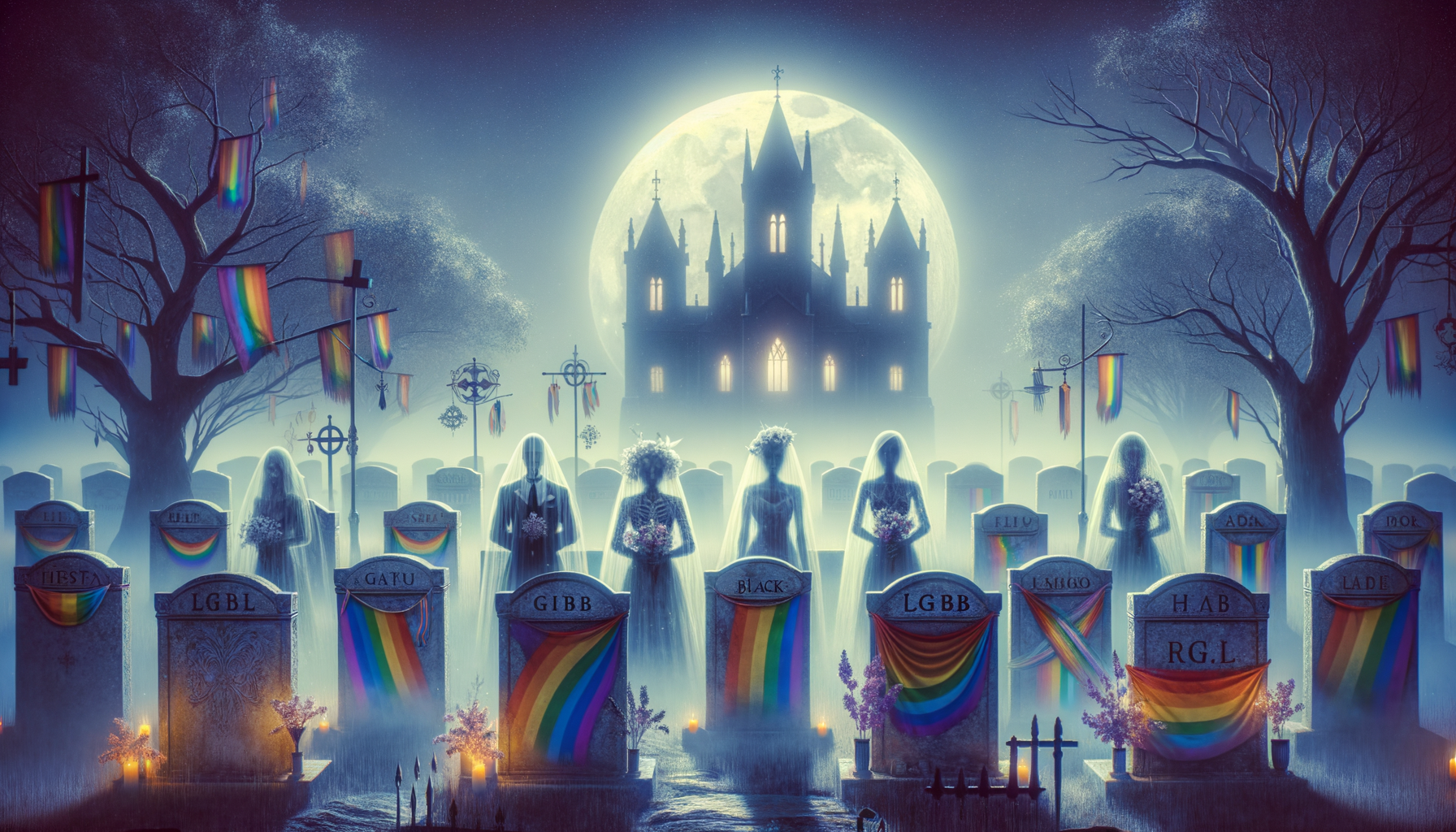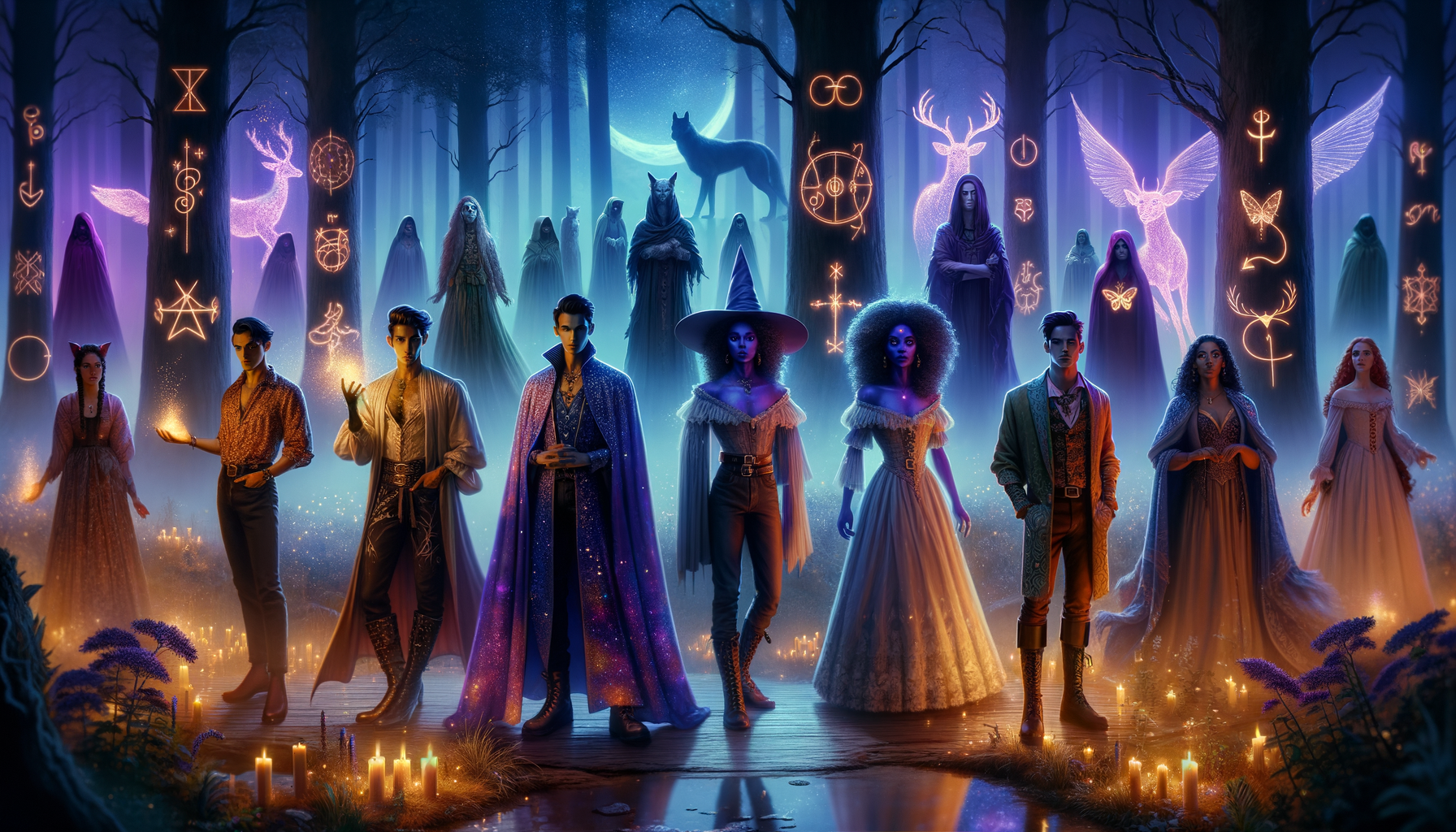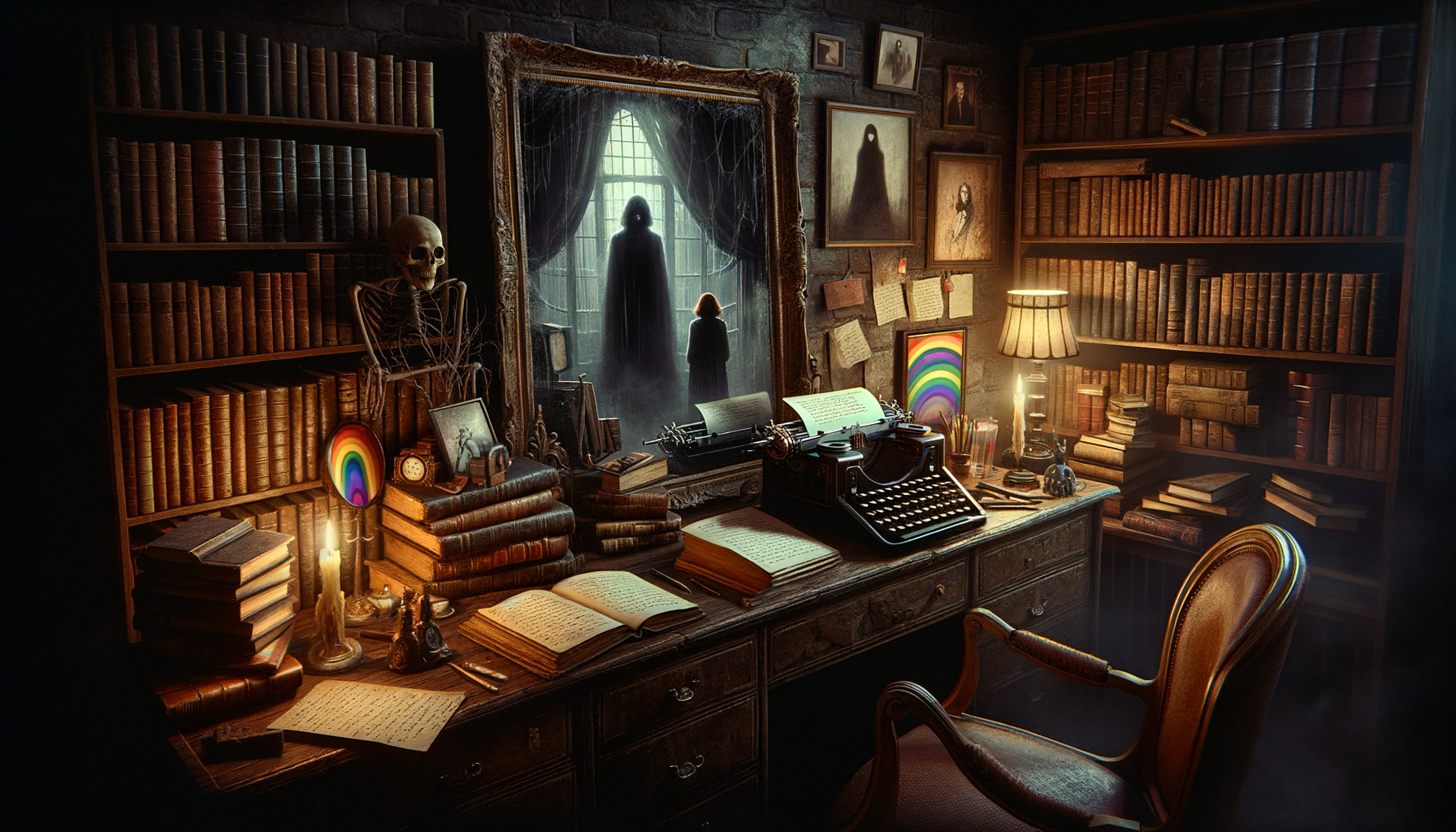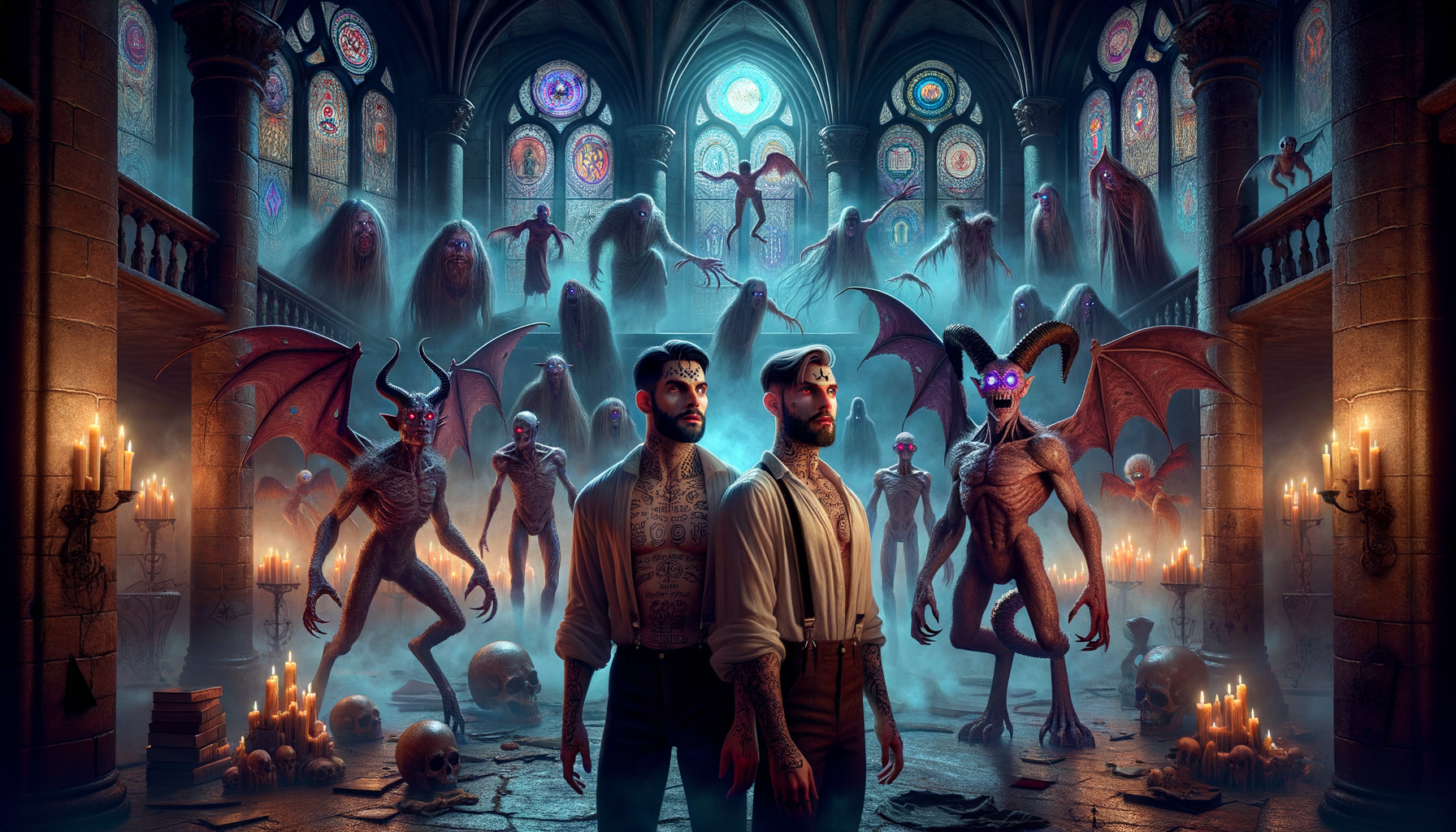Do you love a good ghost story? How about one that brings a unique and inclusive twist? Welcome to our collection of LGBT ghost stories, where chills and thrills come with a rich tapestry of diverse characters and plots. Did you know that a 2023 survey found that 42% of LGBT people believe in ghosts? These tales not only spook us but also reflect the experiences of a vibrant community. Grab a blanket, turn down the lights, and get ready for some unforgettable chills!
The History of LGBT Ghost Stories
Origins and Cultural Significance
LGBT ghost stories have their roots in various cultures and historical contexts. These tales often emerged in societies where LGBT identities were marginalized or persecuted. The supernatural elements provided a veil through which writers could explore themes of identity, love, and societal norms without direct confrontation. These stories were not just entertainment but also a means of preserving and expressing the experiences and emotions of LGBT individuals in times when open discussion was often dangerous.
Influential Authors and Storytellers
Several authors have played pivotal roles in shaping the landscape of LGBT ghost stories. Sheridan Le Fanu and Oscar Wilde are two notable figures whose works have left a lasting impact. Their stories often featured complex characters and intricate plots that subtly incorporated LGBT themes. These authors, among others, used their narratives to challenge societal norms and offer a voice to those who were often silenced.
Popular Themes and Motifs
Common themes in LGBT ghost stories include forbidden love, identity struggles, and the quest for acceptance. Ghostly apparitions often symbolize unresolved issues or the lingering presence of past injustices. Motifs such as haunted houses, spectral lovers, and cursed objects are frequently used to explore the intersection of the supernatural and the emotional lives of LGBT characters.
Classic LGBT Ghost Stories to Know
“Carmilla” by Sheridan Le Fanu
“Carmilla” is a groundbreaking novella that predates Bram Stoker’s “Dracula.” It tells the story of a young woman, Laura, who befriends and later discovers the true nature of Carmilla, a female vampire. The story is significant for its exploration of a same-sex relationship, cloaked in the guise of a gothic horror tale. Carmilla’s character is both alluring and terrifying, embodying the fears and fascinations of Victorian society regarding female sexuality and same-sex attraction.
“The Picture of Dorian Gray” by Oscar Wilde
Oscar Wilde’s only novel, “The Picture of Dorian Gray,” is rich with ghostly elements and subtextual explorations of queer identity. Dorian Gray’s portrait, which ages and decays while he remains youthful, serves as a supernatural mirror of his inner corruption and hidden desires. Wilde’s narrative delves into themes of vanity, hedonism, and the consequences of living a double life, reflecting the struggles of many LGBT individuals in a repressive society.
Other Influential Works and Their Impact
Beyond “Carmilla” and “The Picture of Dorian Gray,” other significant works include Henry James’s “The Turn of the Screw,” which features ambiguous relationships and psychological horror, and Vernon Lee’s ghost stories, which often subtly address themes of gender and sexuality. These works have inspired countless writers and have been instrumental in the evolution of the genre.
Modern LGBT Ghost Stories
Key Contemporary Authors and Their Works
Today, a new generation of authors is reshaping LGBT ghost stories. Writers like Sarah Waters, with her novel “The Little Stranger,” and Poppy Z. Brite, known for “Drawing Blood,” bring fresh perspectives and contemporary sensibilities to the genre. Their stories often blend traditional gothic elements with modern themes, creating rich, multi-layered narratives.
Popular Series and Anthologies
Anthologies such as “Queer Hauntings” and series like “The Haunting of Hill House” (adapted for television with LGBT characters) have brought LGBT ghost stories to a wider audience. These collections and series highlight the diversity and depth of the genre, showcasing a range of voices and experiences.
How Modern Writers Are Reshaping the Genre
Modern writers are pushing the boundaries of LGBT ghost stories by incorporating elements of psychological horror, magical realism, and even science fiction. They are not only telling stories of the past but also exploring present-day issues and future possibilities. This evolution reflects a broader acceptance and recognition of LGBT narratives in mainstream literature.
Real-life Haunted Places with LGBT History
Notable Haunted Locations with LGBT Significance
Several haunted locations around the world have significant LGBT histories. For example, the Chelsea Hotel in New York City, known for its artistic residents, has stories of ghostly apparitions and was a haven for LGBT artists and writers. The Edinburgh Vaults in Scotland, with their grim past, also have tales linked to LGBT individuals who sought refuge there.
The Stories Behind These Haunted Places
The Chelsea Hotel is said to be haunted by the spirits of past residents, including famous LGBT figures like Dylan Thomas and Leonard Cohen. The Edinburgh Vaults, meanwhile, are rumored to be haunted by the spirits of those who lived and died in the underground city, including marginalized LGBT individuals who faced persecution.
How These Locations Have Influenced Ghost Stories
These haunted places have inspired numerous ghost stories and have become symbols of the enduring presence of LGBT history. Writers often draw on the rich, haunted pasts of these locations to create narratives that honor the memories and struggles of the LGBT community.
LGBT Representation in Horror Films
Iconic Films Featuring LGBT Themes and Characters
Films like “The Haunting” (1963), “Hellbent” (2004), and “The Babadook” (2014) have featured LGBT themes and characters, each contributing to the genre in unique ways. These films often use horror to explore deeper issues of identity, fear, and societal acceptance.
The Evolution of LGBT Representation in Horror Cinema
Over the years, LGBT representation in horror films has evolved from subtextual hints to explicit narratives. Early films often had coded references to LGBT characters, while contemporary films are more likely to feature openly LGBT protagonists and storylines. This shift reflects broader changes in societal attitudes and a growing demand for diverse representation in media.
Must-Watch LGBT Ghost Movies in 2024
Looking ahead, several upcoming films promise to continue the tradition of LGBT ghost stories. Titles to watch for in 2024 include “Spectral Love,” a tale of two women separated by time but connected by a haunted mansion, and “Phantom Hearts,” which explores the relationship between two men, one of whom is a ghost seeking redemption.
Writing Your Own LGBT Ghost Stories
Tips for Crafting Compelling Characters and Plots
When writing your own LGBT ghost stories, focus on creating well-rounded characters with rich backstories and emotional depth. Incorporate supernatural elements that enhance the narrative rather than overshadow it. Use the ghostly aspects to explore themes of love, loss, and identity in a way that resonates with readers.
Common Pitfalls to Avoid
Avoid relying on stereotypes or clichéd tropes that can undermine the complexity of your characters. Ensure that the supernatural elements serve a purpose in the story and are not just there for shock value. Additionally, be mindful of cultural sensitivities and strive for authenticity in your portrayal of LGBT experiences.
Resources and Inspiration for Aspiring Writers
There are numerous resources available for aspiring writers of LGBT ghost stories. Anthologies, writing workshops, and online communities can provide inspiration and support. Books like “Writing the Other” by Nisi Shawl and Cynthia Ward offer valuable insights into creating diverse characters, while websites like Queer Sci Fi and Lambda Literary are great places to find like-minded writers and readers.
Conclusion
Exploring LGBT ghost stories offers more than just spine-tingling scares; it provides a window into diverse lives and histories. Whether you’re a reader, a writer, or simply curious, these tales weave a rich narrative that lingers long after the last page. Ready to dive into a world of inclusive horror? Check out our recommended reading list and start your haunting journey today!




